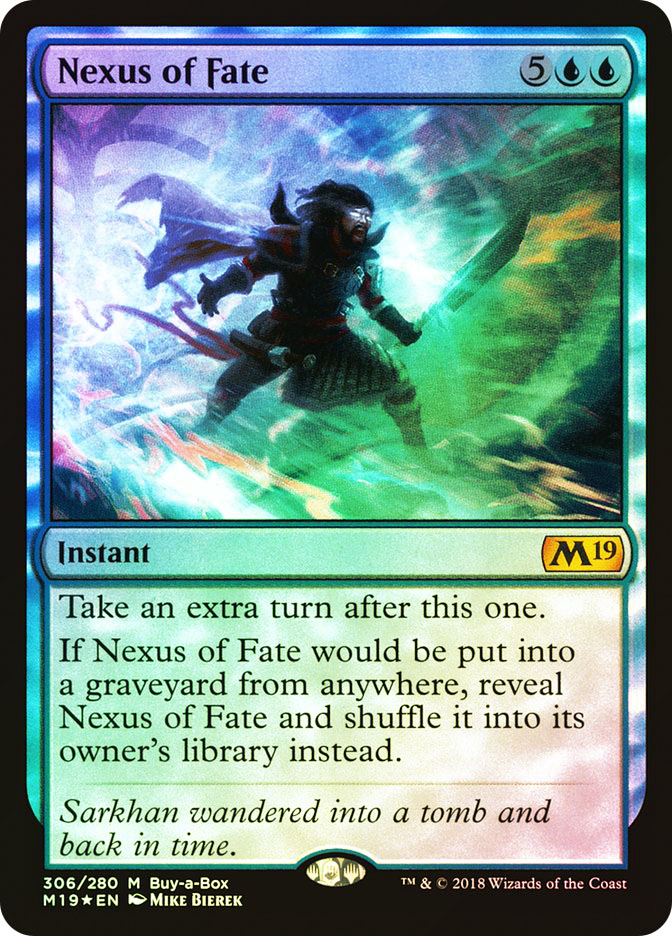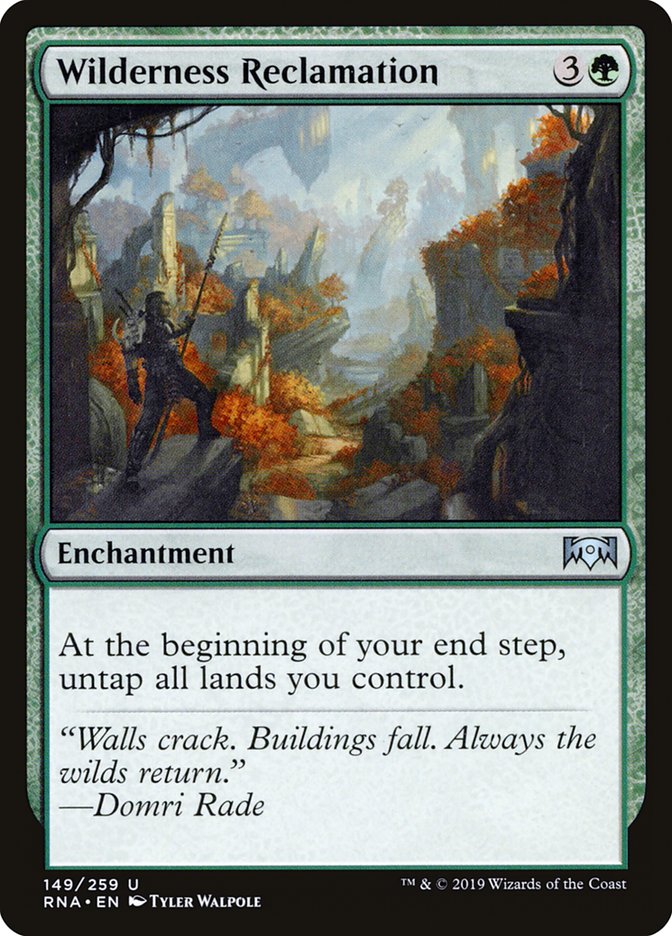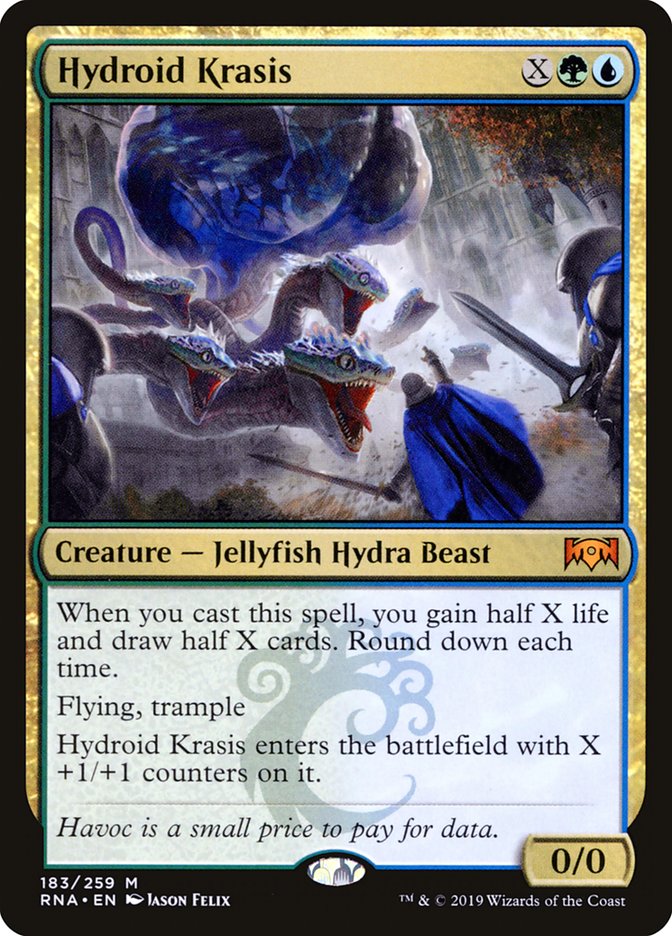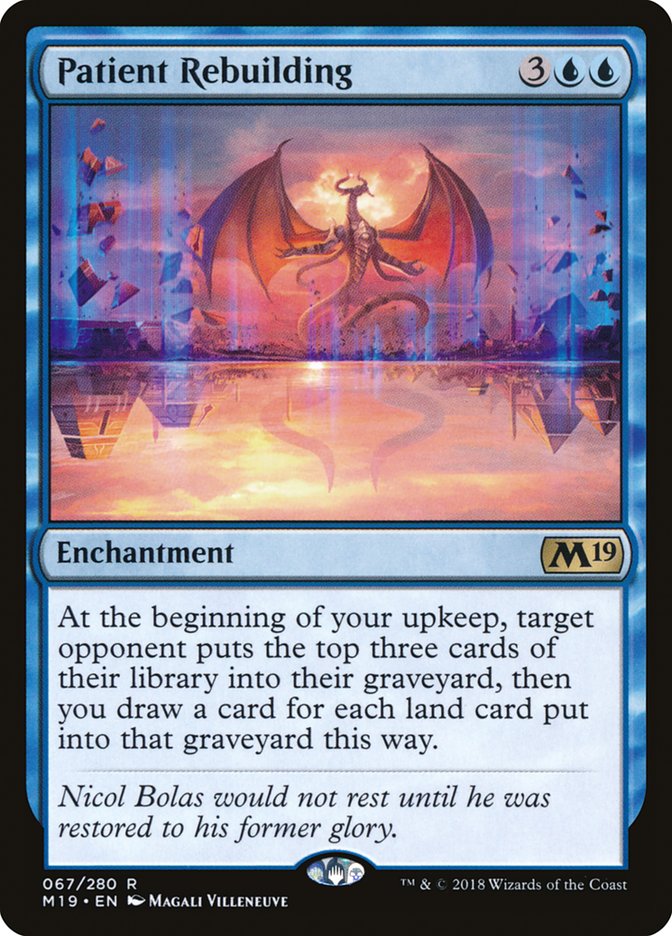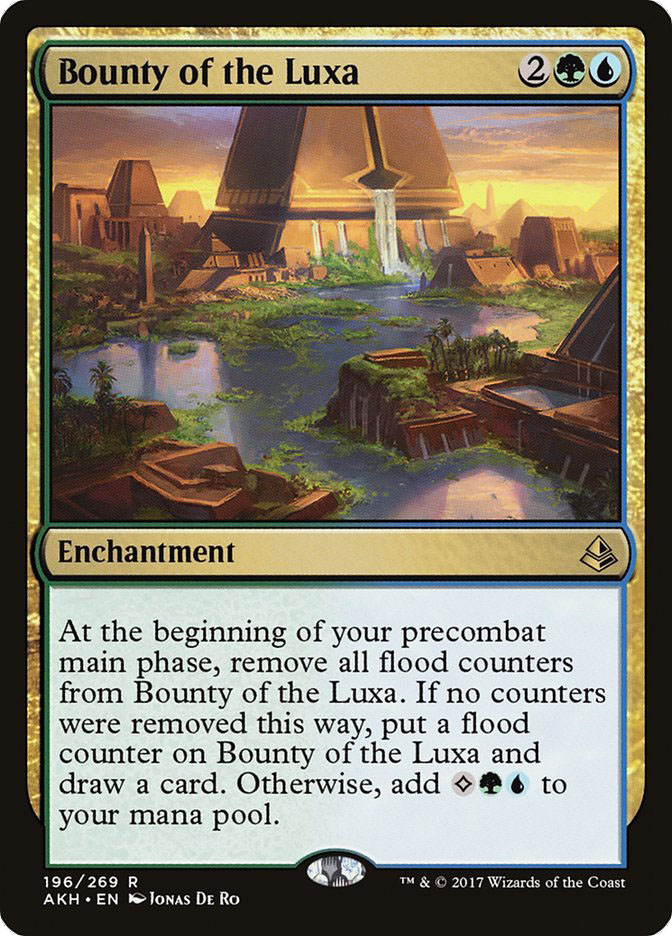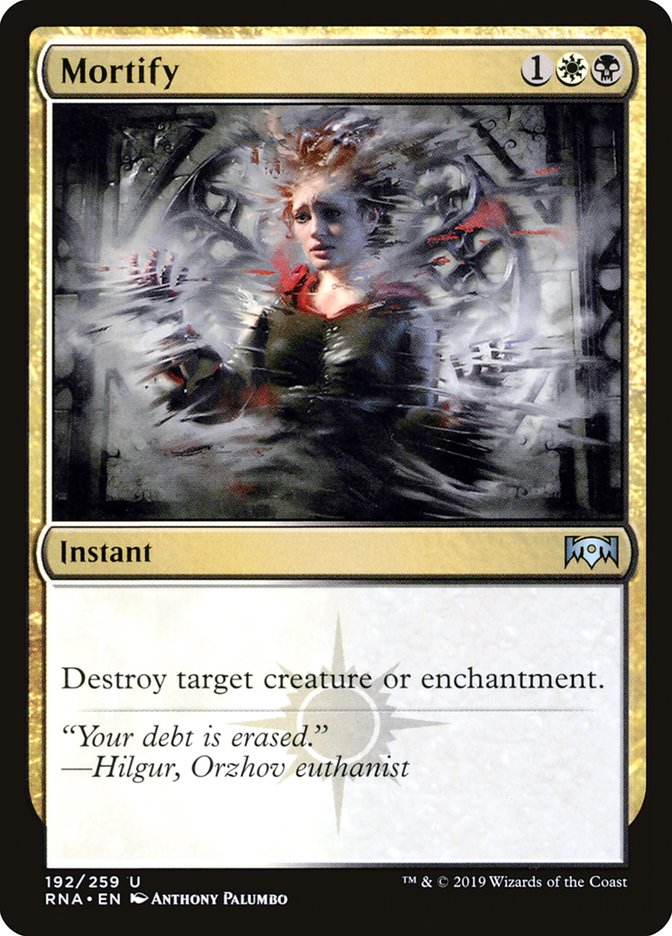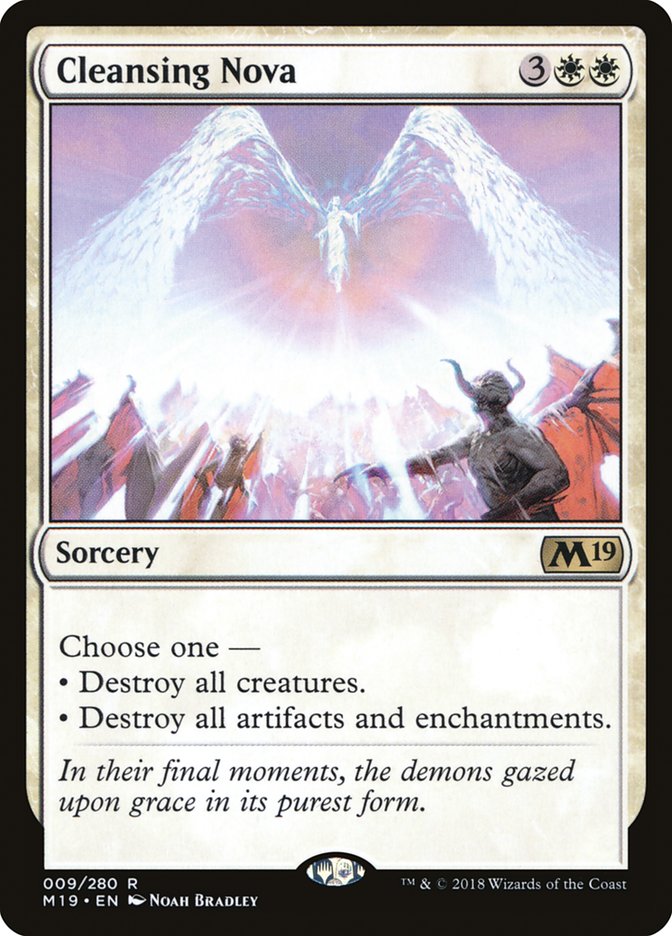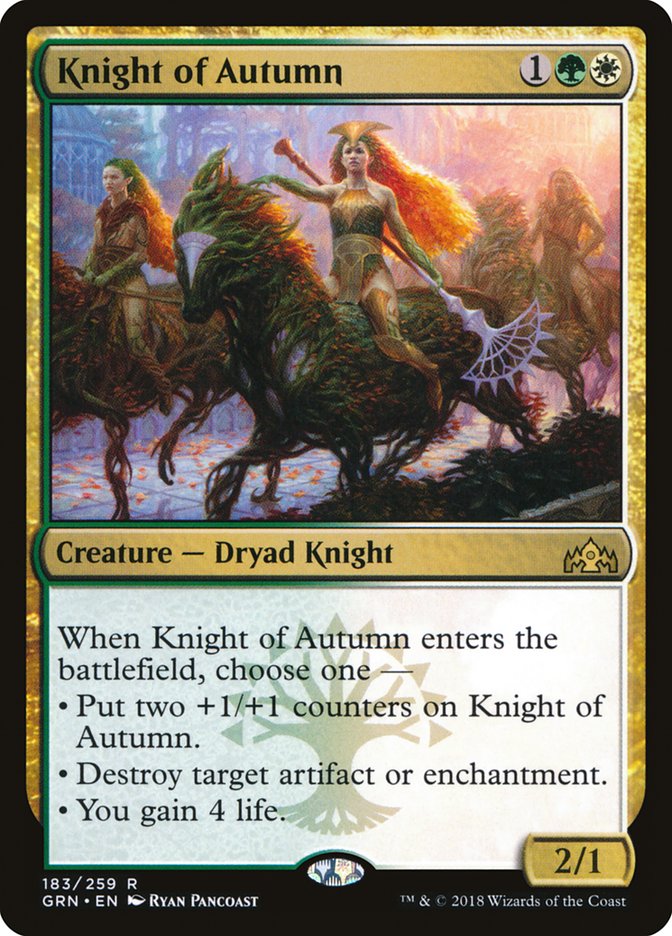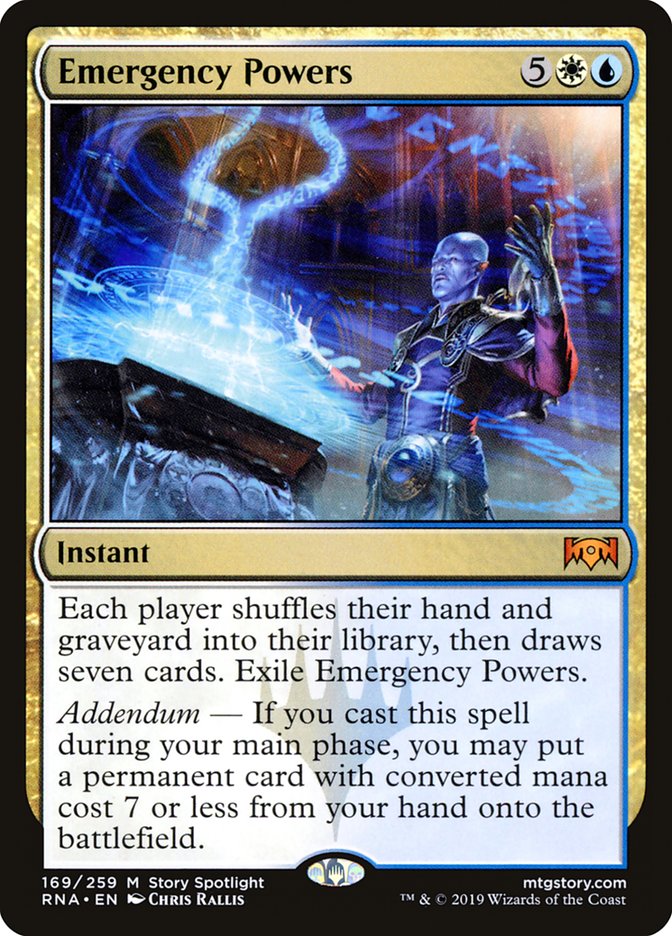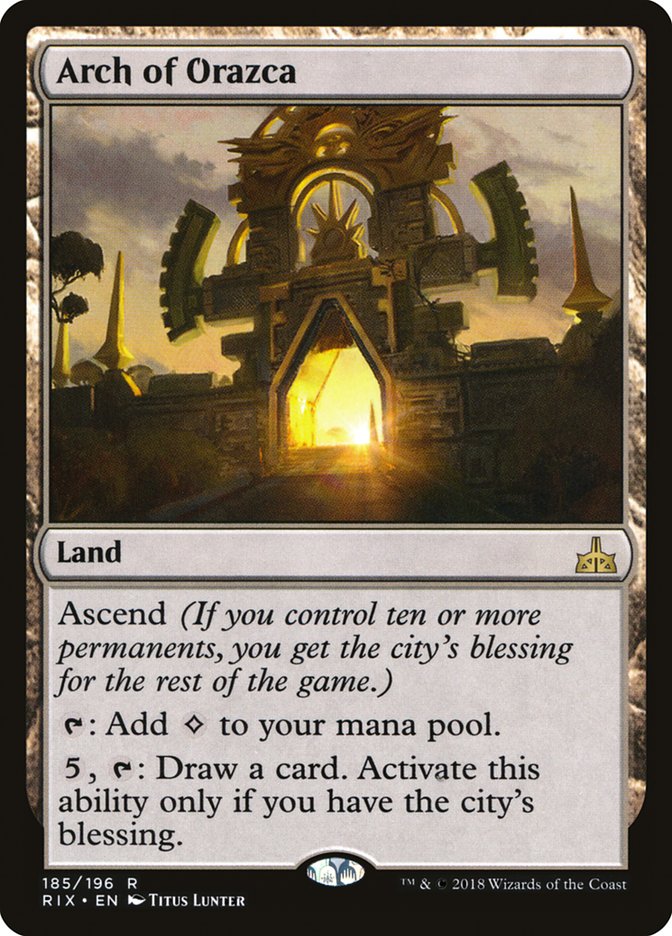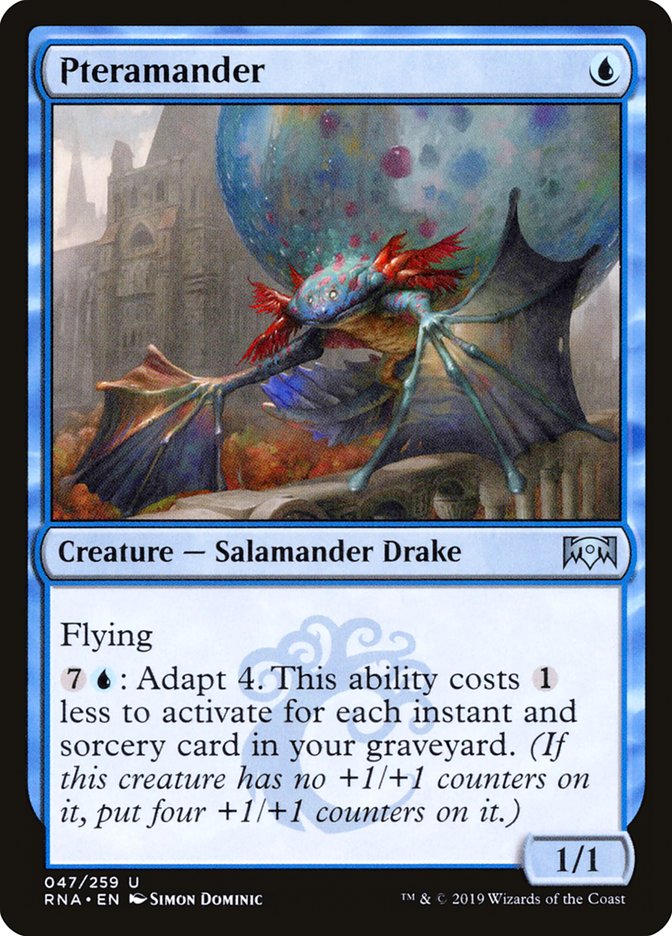The arms race for finding viable week one strategies for Standard is on as
SCG Indianapolis looms. Ravnica Allegiance has given Standard a
fresh set of interesting and high power level cards to play with, and I’ve
been giving a serious look at just about everything under the sun to find
something broken. So far, a handful of cards from the set have given me a
bunch of ideas to try for decks, but one card keeps pulling me back,
begging me to play it in the most broken shell possible:
The Bant Nexus deck that saw its debut at Pro Tour 25th Anniversary took Standard by storm towards the end of a
format dominated primarily by Rakdos Aggro. After rotation took away the
cycling cards that made the deck so consistent, the deck practically
vanished for Guilds of Ravnica Standard. A certain green
enchantment, however, poses to bring the archetype back into the spotlight
once more:
My initial opinion of Wilderness Reclamation was tempered by the fact that
the card was an uncommon. Thankfully, a very intelligent acquaintance of
mine reminded me that Felidar Guardian was also an uncommon, which
quickly corrected my mindset. Wilderness Reclamation does a lot for low
opportunity cost, and it fits in as a very powerful engine in decks built
around Nexus of Fate. Emma Handy gave her take on Bant Nexus last week and
provided a very robust shell to start testing with. I started with her list
as a baseline, and after some games and finding what I liked and what I
didn’t like, this is currently where I’m at:
Planeswalkers (4)
Lands (24)
Spells (32)
- 4 Gift of Paradise
- 4 Settle the Wreckage
- 2 Search for Azcanta
- 4 Nexus of Fate
- 4 Root Snare
- 4 Chemister's Insight
- 4 Growth Spiral
- 2 Emergency Powers
- 4 Wilderness Reclamation
Sideboard

The sideboard numbers could be tweaked some, but the cards in the sideboard
at current are all cards that impressed me in some capacity in various
matchups. The most impressive card out of the sideboard was Hydroid Krasis.
When it was good, it was really good, and I could see a world
where it finds room in the maindeck.
Krasis is absolutely at its best against the midrange decks of the format;
decks that give you enough time to develop a ton of mana and don’t
typically kill you quickly but usually don’t have the tools to counter or
take the card out of your hand before you extract some value out of its
cast trigger. Golgari Midrange is still pretty popular in the early stages
of this format, and their plan after sideboard is to try to use Duress to
pick apart your hand. Hydroid Krasis does a phenomenal job of dodging these
effects and at some point, providing you with the additional cards, life,
and blocking to bridge into looping Nexus of Fate.
The rest of the sideboard aims to target the first level of the format thus
far. At this point, this consists of the following:
- Bant Nexus
- Red/Rakdos Aggro
- Teferi-based control (Esper, Jeskai, Azorius)
- Golgari Midrange
- White-based Aggro
- “Aristocrats”-style decks (Mardu, Rakdos)
- Izzet Drakes / Izzet Phoenix
Lyra Dawnbringer and Knight of Autumn help stem the bleeding against the
lower-to-the-ground aggressive decks. Lyra, in particular, is very nice in
the sideboard of this deck now as you have more than just Gift of Paradise
to help you power her out on turn 4, and the format is devoid of solid
answers to her out of the decks that would fear her, like Unlicensed
Disintegration and Fight with Fire (which is still legal but not seeing
much play as it stands in the red decks). Negate and Carnage Tyrant let you
fight control decks on a different axis, and being able to power out Tyrant
ahead of schedule is frequently too much for them to handle.
Regarding Knight of Autumn, I like the flexibility it offers in being a
tool to help deal with enchantments and artifacts – crucial in the mirror
match for handling other copies of Wilderness Reclamations and Search for
Azcantas – and being a solid lifegain tool when required. This was Invoke
the Divine for a little while, but I really liked the clock that Knight
presented in the mirror, which made it the winner.
Moving to the maindeck, I made a few changes from Emma’s list. They are as
follows:
Out:
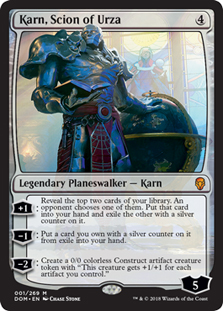
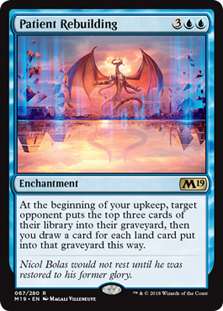
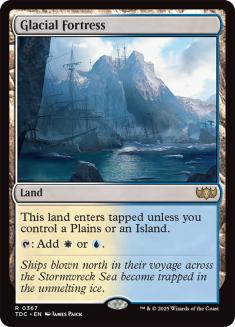

In:
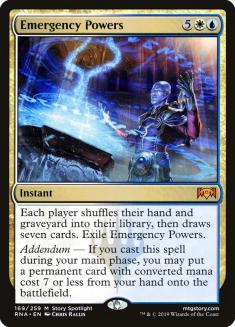

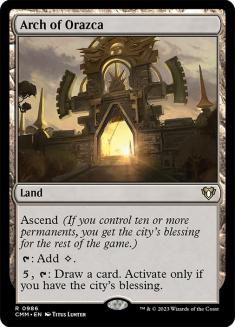

Again, referencing the original Bant Nexus list from last format, Karn,
Scion of Urza used to complement Teferi as a way to dig through your deck
and thin it to increase your chances of looping Nexus of Fate. For Nexus of
Fate to truly help you take advantage of the extra turns it provides, you
need to have a card advantage engine on the battlefield that helps
facilitate siphoning additional cards from your library beyond the one from
your draw step.
As it stands, these engines are:
-
Search for Azcanta (transformed is best, but it still lets you thin
your deck) - Teferi, Hero of Dominaria
- Chemister’s Insight
- Growth Spiral
- Arch of Orazca
- Emergency Powers (with Wilderness Reclamation on the battlefield)
Karn feels too out of place in this deck. Once upon a time, this deck would
play a singular copy of Karn’s Temporal Sundering as a slightly cheaper
fifth time walk effect, but it required you to play more than just Teferi
for legendaries to enable it. Without Sundering, Karn becomes less
interesting to me.
The other card I moved towards cutting was Patient Rebuilding.
Patient Rebuilding is, on the surface, a fantastic card to have on the
battlefield. Like Teferi and other permanent-based sources of card
advantage, it works with you while you loop Nexus of Fates to draw more
than one card a turn until you hit the breaking point where it becomes
mathematically improbable/impossible to not cast a Nexus at least once per
turn. Last Standard format’s version of Bant Nexus sometimes played Bounty
of the Luxa or The Mirari Conjecture in a similar fashion to provide
additional card advantage to power you into the lategame that didn’t need
to be protected by fogs.
The reality of playing with Patient Rebuilding is that the format is
already starting to warp around enchantment removal that’s extremely
flexible and maindeckable. The following are leading the charge:
It has been on more than one occasion that my opponent has two, three, or
even four-for-one’d me by casting a Cleansing Nova with its “hidden” mode.
Mortify’s printing gives decks a cheap catch-all removal spell with the
added bonus of destroying a slew of Standard’s most powerful enchantments.
Knight of Autumn’s aforementioned flexibility makes a completely reasonable
option in the maindeck of Selesnya-based strategies.
The big question you may be wondering after I made this point is “well,
we’re relying reasonably heavily on Wilderness Reclamation, an enchantment, to go off. Why do you make this argument but still
include this card in the deck?”
The answer to this lies in the biggest reason why Wilderness Reclamation is
such an absurdly powerful Magic card: the benefits come almost immediately.
Short of a well-timed Mortify, it’s entirely in the realm of possibility
(and usually is the case) that you will cast Reclamation, untap with it,
and gain at least some advantage from the extra mana provided, even if it
bites the dust to some sort of removal in the next turn cycle. Your
opponent has a very short amount of time to remove Reclamation before you
take over the game with it, either by activating Search for Azcanta/Arch of
Orazca multiple times, casting an absurd amount of Chemister’s Insights in
one turn, or looping Nexus of Fates. Such is not the case for Patient
Rebuilding, as the benefit is not immediate, not guaranteed, and requires
multiple turns to provide long-term advantage.
As such, I have moved to adding two copies of Emergency Powers to the
maindeck.
By adding Emergency Powers, I’m way more comfortable being more aggressive
in how quickly I fire off my Settle the Wreckages and Root Snares to
preserve my life total, as I know I’ll be able to fuel back up at a healthy
life total by doing so. It’s fairly expensive, but is, once again, a card
that becomes trivial to cast within the one-turn cycle of a Wilderness
Reclamation that remains unscathed.
My testing is still inconclusive regarding these changes as the format is
still so young, and a lot can change between now and Saturday, but it’s a
change I have thought about making and would like to experiment with just a
couple extra card advantage engines in those slots. Emergency Powers is a
on-time effect but is an overwhelmingly powerful one, so I think it’s
definitely worth a shot. Other cards on my short list include Tezzeret,
Artifice Master, The Mirari Conjecture (an enchantment, yes, but at least
it provides immediate value), and Treasure Map.
Finally, the last subtle change I made was the addition of Arch of Orazca
to the manabase. This is admittedly an idea I got from playing against
other Nexus players online, but I love the premise. It’s very good on its
own given that this style of deck is trying to ramp as quickly as possible,
but the card’s power quite literally doubles with Wilderness Reclamation on
the battlefield. Sneaking in a singular copy into the mana base that
doubles as another card advantage engine seems sweet and I look forward to
seeing how it plays.
Forming a Battle Plan
All things considered, I think this is a nice place to start with Bant
Nexus. If this list ends up being solid enough for SCG Indianapolis, I
would sideboard as follows against the decks I would expect to see:
VS Mono-Red / Rakdos Aggro
These decks will likely be similar to the Mono-Red decks of last format,
with a few differences. The newest cards to watch out for are:
These cards definitely make the deck much leaner than before, and I’ve been
impressed at how the addition of these new cards have made this deck more
powerful.
Lyra is your absolute best way to win the game short of simply comboing
off, so it’s best to build your strategy around this plan. Cut the
expensive spells and the ones that will likely never provide you value in
time in favor for Knight of Autumn to help you bridge to Teferi and Lyra.
Out:


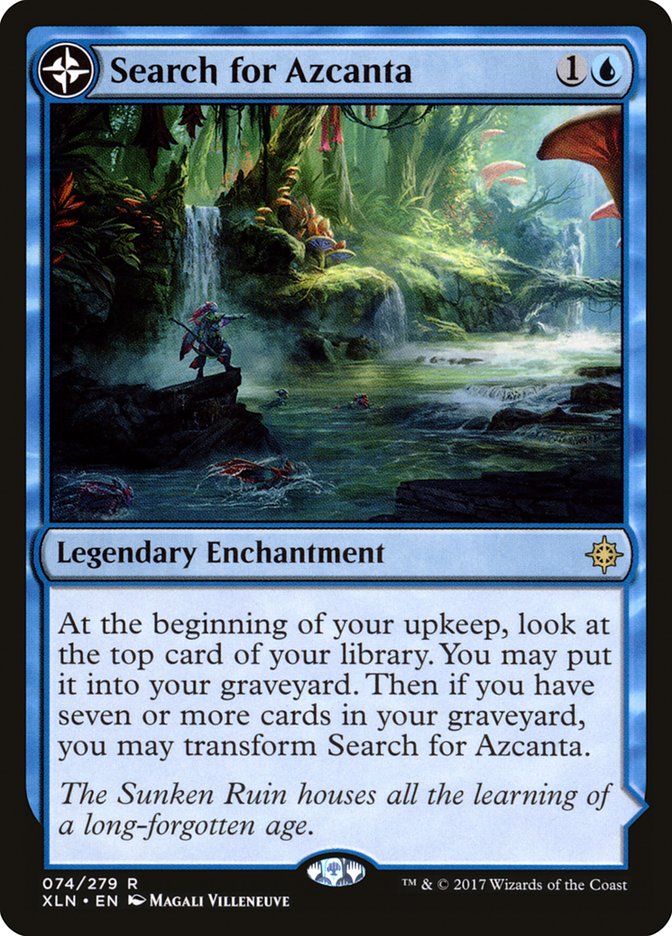




In:
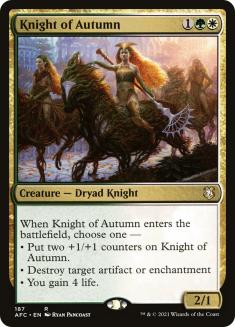


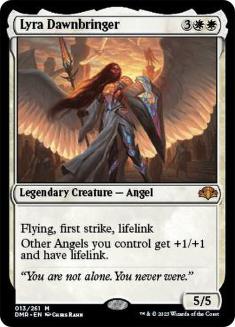



VS Bant Nexus
The mirror match revolves around powering out your mana engines as fast as
possible to overpower your opponent and use a well-timed Negate to stymy
their progression.
The last Nexus of Fate to resolve will give that player the next extra
turn, so keep that in mind when trying to jam one on your opponent’s end
step.
Out:
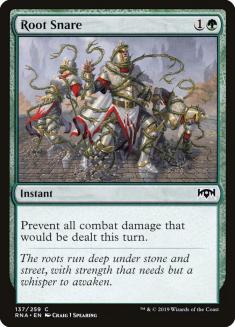



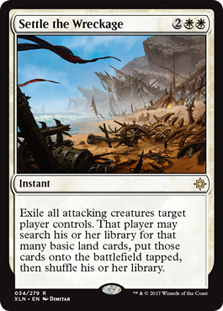



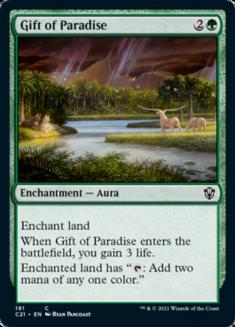

In:







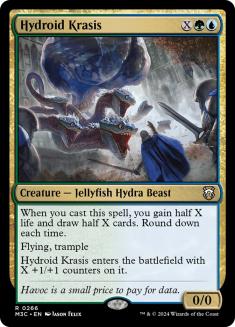


Use Knight of Autumn to keep Wilderness Reclamation and friends in check
and Negate to counter specific spells that matter. Cards that are
must-counter include Teferi, Hero of Dominaria, Wilderness Reclamation,
Nexus of Fate, Emergency Powers, and various card advantage engines you may
see, like Patient Rebuilding and The Mirari Conjecture. Since there is
room, I like bringing in Hydroid Krasis as a nice, hard-to-answer win
condition that will likely go uncontested short of Teferi, as your opponent
will most like have also cut their Settle the Wreckages and Root Snares. Be
on the lookout for creatures of some sort from your opponent. Since this
deck can play a wide variety of them in the sideboard, don’t be surprised
to see Carnage Tyrant or Lyra from your opponent as well.
VS Golgari Midrange
Though I don’t expect this deck to hang around for too long given the power
level boost to the format Ravnica Allegiance provided, I still
expect Golgari Midrange to be popular in the early stages in the format,
especially since ol’ Wildgrowth Walker still gives the red decks that will
litter the field at SCG Indianapolis a hellish experience if unchecked.
Golgari Midrange hasn’t gotten a whole lot from what I’ve seen from Ravnica Allegiance short of the addition of maybe Growth-Chamber
Guardian, but I’ve also seen red and blue splashes for other powerful
options thanks to the addition of Stomping Ground and Breeding Pool to the
format. If you see red, be cognizant of cards like Cindervines out of the
sideboard, and if you see a blue splash, you should naturally be aware of
counterspells like Negate or Disdainful Stroke.
Out:







In:







Negate deals with the laundry list of cards your opponent will use to try
to disrupt your plan. Using Negate to protect Wilderness Reclamation from
the likes of Vivien Reid and Vraska’s Contempt from Teferi is big game.
Watch out for Duress poking a hole in your hand and try to work towards a
large enough Hydroid Krasis to pull you out of a tight spot. Be aware of
Hydroid Krasis having flying when it comes to being sniped down by Vivien
Reid’s -3 ability.
VS Esper/Jeskai Control
Between Esper and Jeskai Control, I firmly expect Esper to be the more
popular week one choice. This can be backed up by the fact that it’s
absolutely the more popular version of the deck I’ve seen in my time
playing online so far. The addition of Kaya’s Wrath and Mortify fill out a
deck that already had a lot of fantastic tools to begin with, and the deck
comes with a fantastic spell suite out of the sideboard. Thief of Sanity,
in particular, is a headache to deal with a large amount of the time. That
said, Niv-Mizzet, Parun is still a powerful enough card that I imagine many
will still give Jeskai a go.
Out:










In:
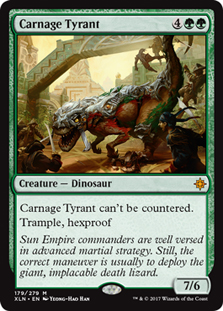









I still want to keep in three Settle the Wreckage to deal with Thief of
Sanity out of Esper, because I cannot understate how easy it is for that
card to ruin your day if it comes down on curve. The rest of the
sideboarding is pretty straightforward. I look to cut Gift of Paradise from
the deck completely as the cards you’re trying to ramp into walk right into
turn 3 countermagic like Absorb and Sinister Sabotage as is, so it’s not
always certain you’ll be trying to jam a turn 4 Teferi, Hero of Dominaria
or Wilderness Reclamation anyway. I thought about bringing in Lyra, but
seeing as how Vraska’s Contempt and Mortify will likely stay in their deck
after sideboarding anyway, I don’t think the card will have a particularly
long average lifespan as a result.
VS Jeskai Control
Out:













In:













Against Jeskai, I’m a lot more interested in Knight of Autumn since I don’t
feel the need for Settle, and even if Crackling Drake is present, Knight of
Autumn can just become a 4/3 and still put up a fight in combat against it.
Additionally, there’s usually a copy or two of Ixalan’s Binding waiting in
the wings, which a well-timed Knight can handle cleanly.
VS Boros Aggro
While this isn’t a deck I have seen a ton of online or on Arena, I expect
it to see still show up in some number. Boros Aggro didn’t really get any
cool new toys in particular, so I can’t say with certainty that there’s
anything new to watch out for.
Out:







In:







VS Izzet Drakes
Izzet Drakes got a nice little shot in the arm threat-wise thanks to this
little fella:
Be on the lookout for Pteramander because it can be protected by Dive Down
quite efficiently, and it helps Izzet Drakes be even more Delver/Xerox
style against you than before, which can be a headache.
Out:










In:










Settle the Wreckage becomes a liability due to the existence of Spell
Pierce that will be lurking alongside the newly added Negates and
Disdainful Strokes your opponent will bring in out of the sideboard, so it
gets mostly shaved, as it plays so well into Izzet’s gameplan. Gift of
Paradise once against isn’t fantastic since it’s very unlikely you will
want to walk a Teferi into countermagic or cast it with the expectation of
being able to successfully bounce a Crackling or Engima Drake on curve.
Instead, I like moving to a plan surrounding Lyra Dawnbringer and
protecting her with Negates, as Lyra is one of the best was to fight any
flavor of drake in combat, including Pteramander. Niv-Mizzet is still a
massive headache, so it will likely involve a timely Teferi minus to dig
you out of that problem should it arise.
I wrote a whole lot here about my initial experience playing Bant Nexus in
this new Standard format, and I hope this can help push some of you in the
right direction when it comes to preparing this deck for the SCG
Indianapolis this weekend. I know that Bant Nexus has a lot of eyes on it
right now, and I expect a well-tuned version of the deck to perform very
well in Indianapolis.
What does that best list look like? I’d be lying if I said I knew, but I
think what I have thus far is a huge step in the right direction.


